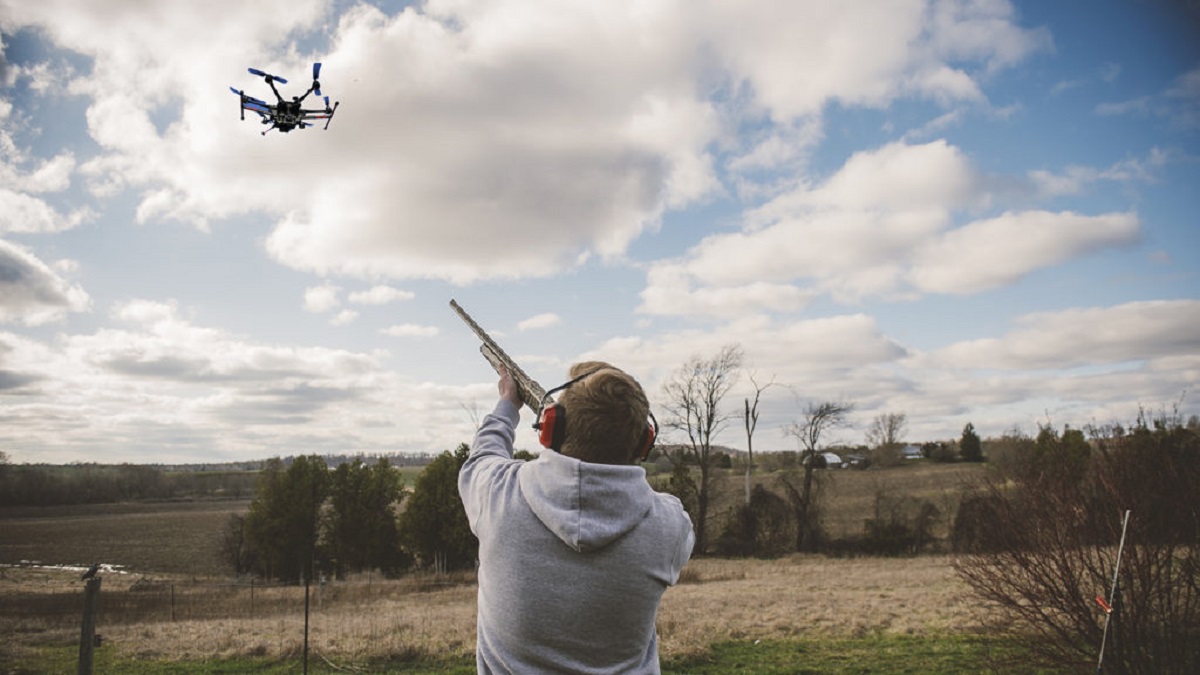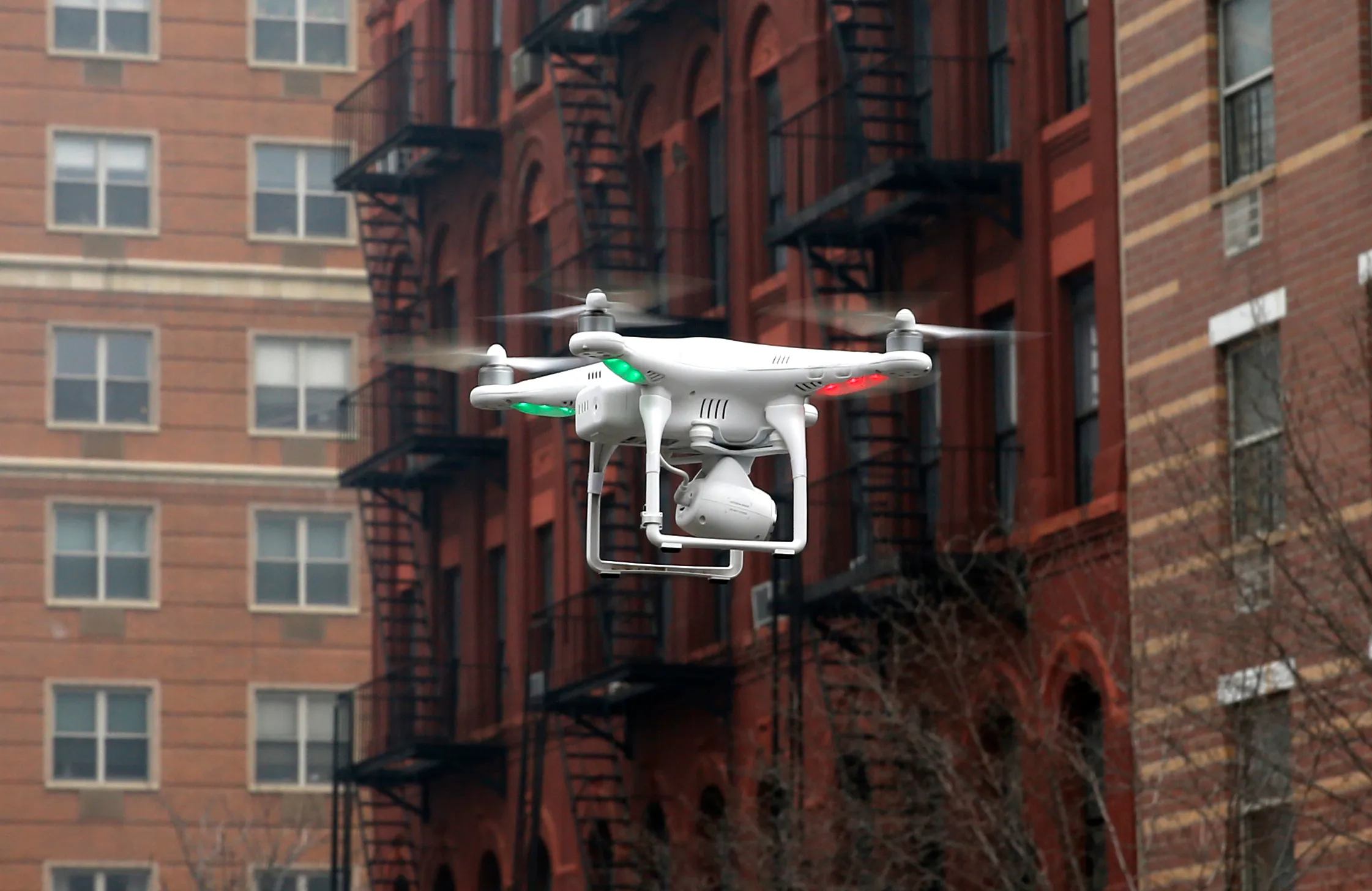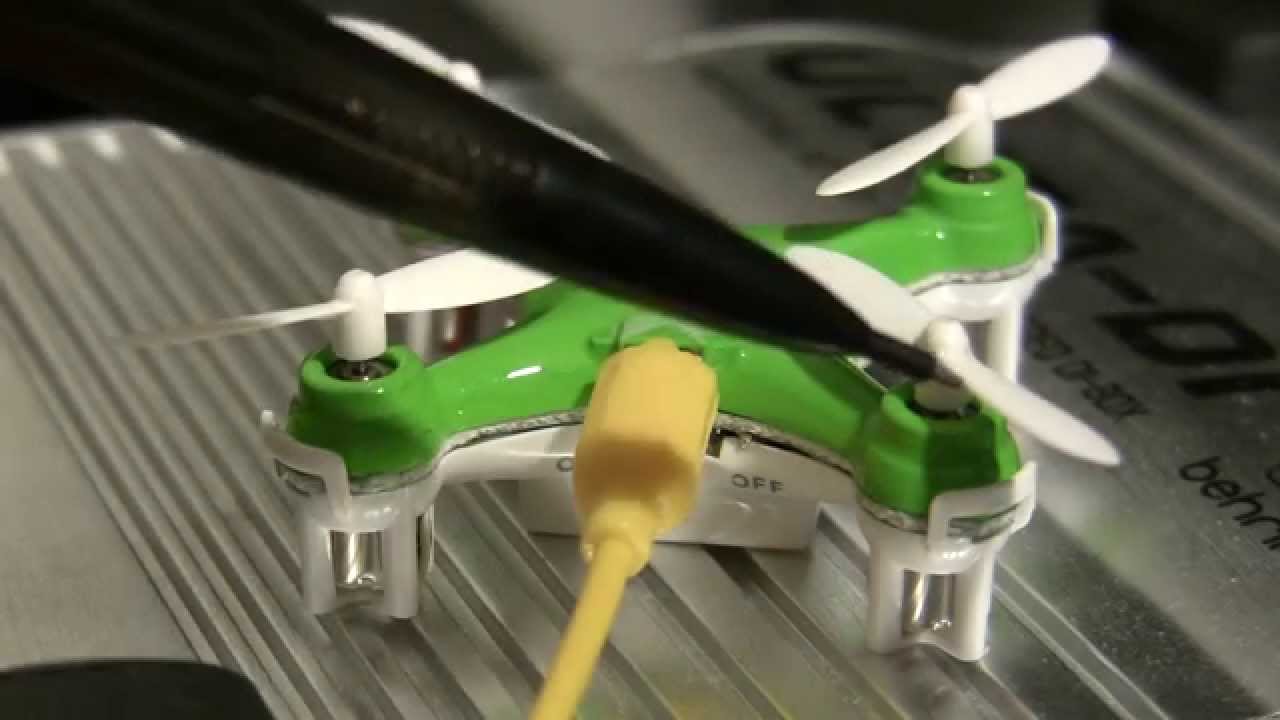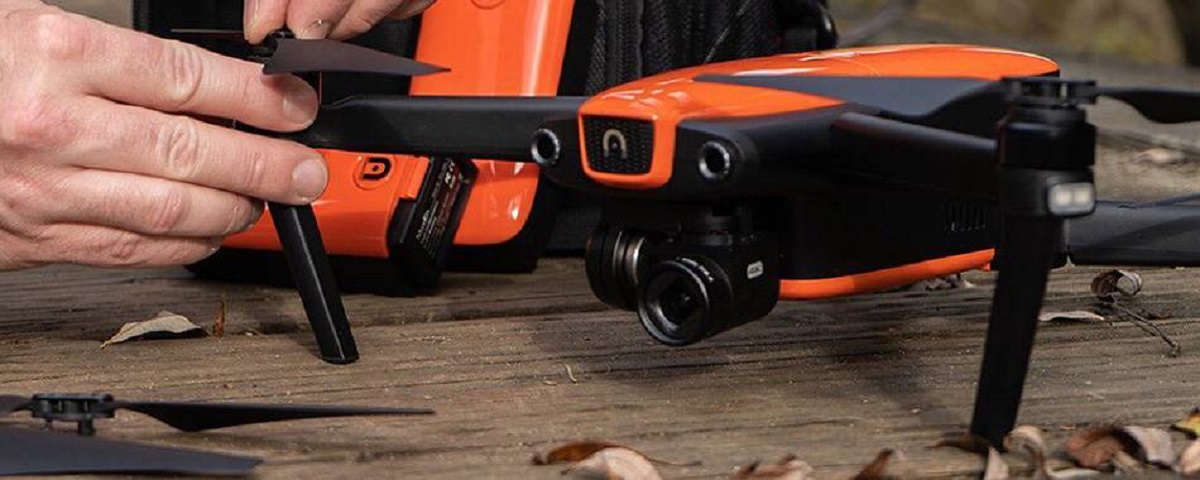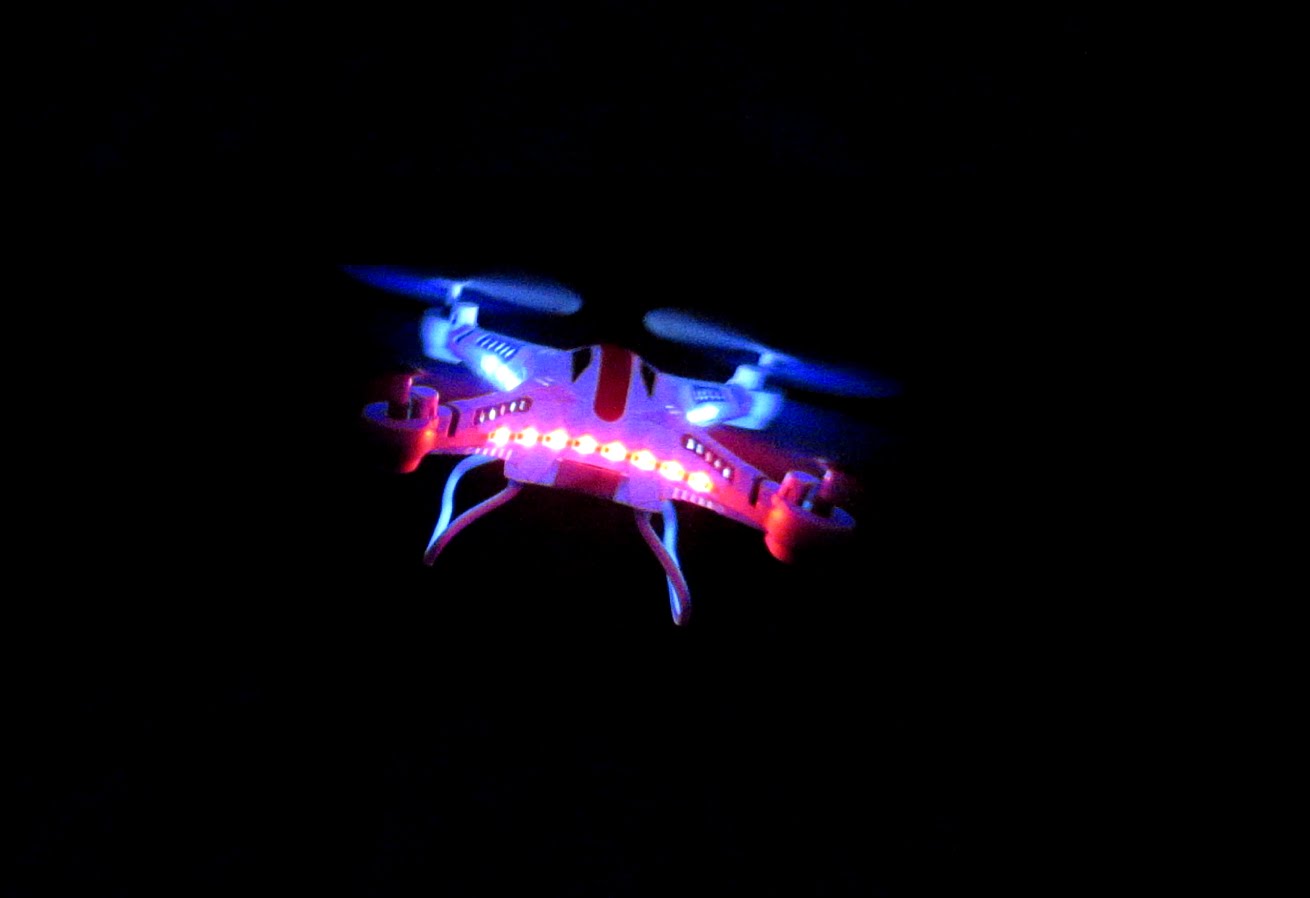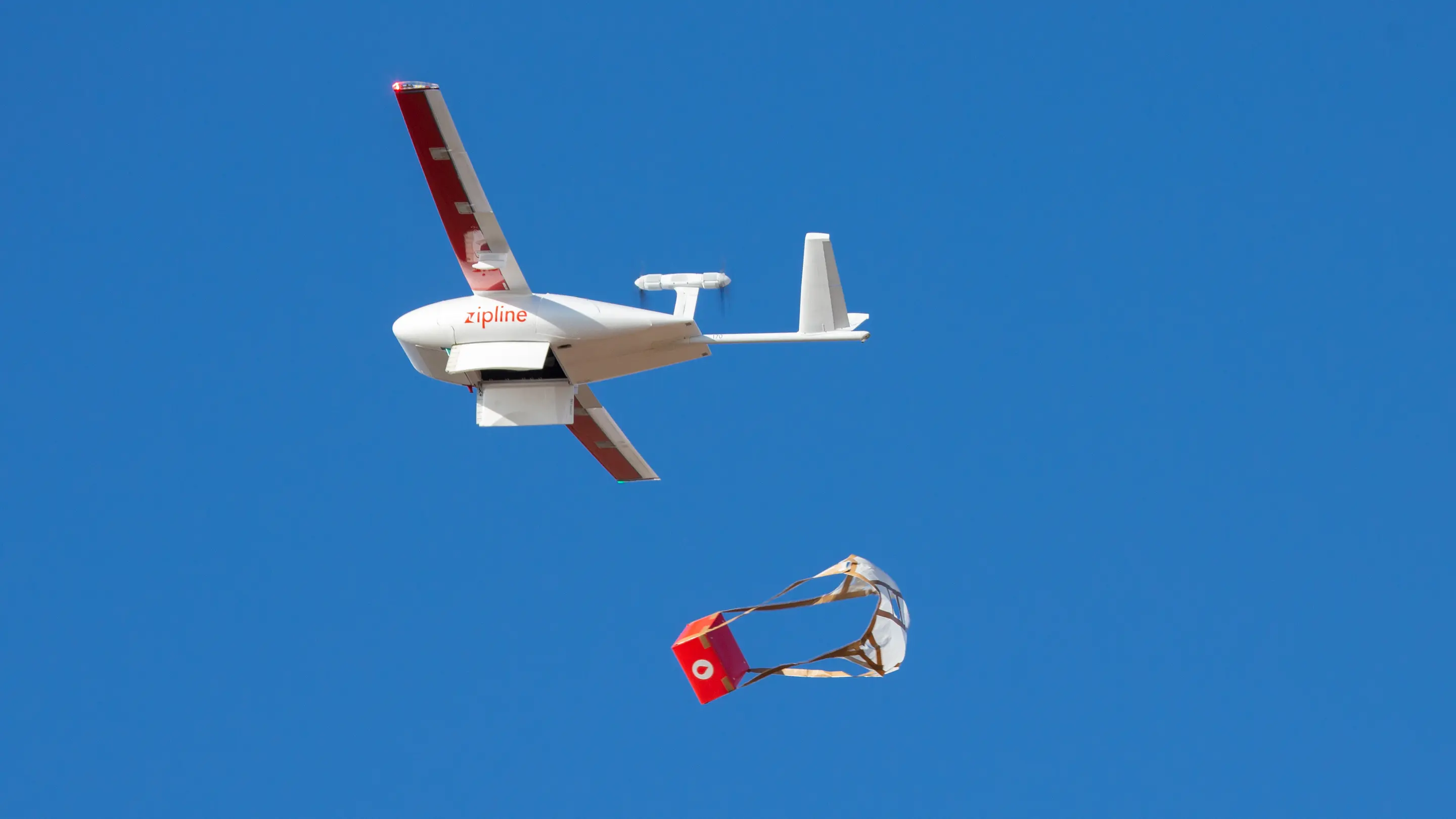Introduction
Unmanned aerial vehicles, commonly known as drones, have gained tremendous popularity in recent years, offering various applications ranging from recreational photography to commercial delivery services. However, with the increasing prevalence of drones, comes the rising concern of potential misuse and security threats they pose. As drones become more accessible and advanced, the need for effective countermeasures to mitigate the risks associated with unauthorized drone activities has become paramount.
In response to the potential threats posed by drones, anti-drone systems have been developed to detect, track, and disable unauthorized drones. These systems employ a range of technologies and strategies to ensure the security of various sensitive areas, such as airports, government facilities, sporting events, and even private properties. Understanding how these anti-drone systems work can provide insights into the measures taken to protect against potential drone-related security breaches.
Anti-drone systems function by utilizing a combination of detection, tracking, identification, assessment, and countermeasure techniques. These systems are designed to detect and respond to unauthorized drones swiftly and efficiently. In this article, we will explore the different components and processes involved in anti-drone systems, providing a comprehensive overview of how they work to safeguard against potential drone threats.
From the initial detection of a drone to the implementation of appropriate countermeasures, anti-drone systems go through a series of steps to ensure the safety and security of the protected area. We will delve into the details of each step, exploring the technology and techniques employed to neutralize potential drone threats.
By gaining a deeper understanding of the functioning of anti-drone systems, individuals and organizations can make informed decisions regarding the implementation and deployment of appropriate countermeasures. With the rapidly evolving drone technology landscape, staying one step ahead of potential risks becomes crucial, and anti-drone systems provide a vital layer of protection to safeguard against the misuse of drones.
Throughout this article, we will explore the various aspects of anti-drone systems, from the detection and tracking of drones to the implementation of countermeasures. By the end, readers will have a comprehensive understanding of how these systems work and the role they play in ensuring security in today’s drone-dominated world.
Understanding Drone Threats
The increasing popularity and accessibility of drones have given rise to both opportunities and challenges. While drones have revolutionized various industries, they have also introduced new security threats. Understanding these threats is essential for developing effective anti-drone systems.
One of the primary concerns associated with drones is their potential for misuse. Unauthorized individuals can use drones for illegal activities such as espionage, smuggling contraband, or conducting targeted attacks. Drones can also pose privacy concerns by trespassing into restricted areas or capturing unauthorized footage.
Another aspect of drone threats is their ability to interfere with critical infrastructure and services. Drones can disrupt communication signals, hinder airport operations, or even cause accidents by colliding with aircraft. These threats highlight the need for robust countermeasures to protect vulnerable locations and ensure public safety.
Furthermore, the advancement of technology has made autonomous drones capable of carrying out pre-programmed missions. This poses a potential threat in the form of autonomous attacks. Drones equipped with explosives or chemical agents can be programmed to target specific locations, posing significant risks for security and public safety.
In addition to intentional threats, drones can also pose accidental risks. Inexperienced operators may lose control of their drones, leading to collisions with property or individuals. Moreover, drones flown in restricted airspace or near sensitive facilities can inadvertently interfere with essential operations.
Understanding these various drone threats is crucial to developing effective anti-drone systems. By identifying the potential risks and vulnerabilities, security professionals can design systems that address specific threats while minimizing false alarms and disruption to legitimate drone operations.
In the subsequent sections, we will explore the different mechanisms employed by anti-drone systems to detect, track, and neutralize threatening drones. With this knowledge, we can gain insights into the capabilities and strategies required to counter the evolving challenges of the drone threat landscape.
Detecting Drones
The first step in preventing drone-related security breaches is effectively detecting the presence of unauthorized drones. Anti-drone systems employ various technologies and methodologies to achieve this crucial task.
Radar systems are commonly used in anti-drone solutions to detect drones at a distance. These radar systems can identify drones by detecting their radar cross-section, which is the measure of how effectively the drone reflects electromagnetic waves. By analyzing the size and profile of the detected object, the system can differentiate drones from other airborne objects like birds or airplanes.
Another method employed for drone detection is radio frequency (RF) scanning. Anti-drone systems use RF sensors to detect and analyze the communication signals between the drone and its controller. By monitoring the frequency spectrum, the system can identify the unique RF signatures of drones and differentiate them from other wireless devices.
Visual detection is another crucial aspect of drone detection. Advanced cameras and computer vision algorithms are used to identify drones by analyzing their visual characteristics, such as size, shape, and movement patterns. This method is especially useful when combined with artificial intelligence and machine learning techniques that can distinguish between drones and other objects in real-time.
Acoustic sensors can also be utilized for drone detection. These sensors can detect and analyze the unique acoustic signatures produced by drone propellers and motors. By comparing the captured acoustic data with a database of known drone sounds, anti-drone systems can identify suspicious drone activity.
Drone detection can also be enhanced through the use of passive sensors such as infrared and thermal cameras. These sensors are capable of detecting the heat signatures emitted by drones, allowing for effective detection, especially in low-light or adverse weather conditions.
Some anti-drone systems also utilize a combination of different detection technologies to enhance accuracy and reliability. By integrating multiple detection methods, such as radar, RF scanning, visual cameras, and acoustic sensors, these systems provide comprehensive coverage and reduce the chances of false alarms.
Once a drone is detected, the information is transmitted to the control center, where further actions can be taken to track, identify, and neutralize the potential threat. In the next section, we will explore the processes involved in tracking and identifying drones to ensure accurate threat assessment.
Tracking and Identifying Drones
After successfully detecting an unauthorized drone, the next step in the anti-drone system is to track and identify the drone accurately. Tracking and identifying drones in real-time are crucial for assessing the potential threat they pose and implementing appropriate countermeasures.
One method used for tracking drones is through the integration of radar systems. Once the radar detects a drone, it continuously tracks its movement, providing real-time updates on its position, altitude, and speed. This tracking data allows security personnel to monitor the drone’s trajectory and assess its intentions.
Visual tracking is another essential aspect of identifying and monitoring drones. High-resolution cameras, equipped with powerful zoom capabilities and image stabilization technology, are used to track and capture detailed footage of the drone. By visually monitoring the drone’s appearance, markings, and any attached payloads, security personnel can gather valuable information for threat assessment.
Infrared and thermal imaging cameras are also employed to track drones, especially in low-light or adverse weather conditions. These cameras detect the heat signatures emitted by the drone, allowing for precise tracking even when visual identification may be challenging.
In addition to tracking, identifying the drone and determining its type and model is crucial for understanding its capabilities and potential threat level. There are several methods employed for drone identification, including optical character recognition (OCR) technology. OCR can extract identifying information such as the drone’s registration number from visible markings, enabling security personnel to gather crucial information about the drone and its operator.
Radio frequency (RF) scanning is another technique used for drone identification. By analyzing the drone’s communication signals, the anti-drone system can determine the make and model of the drone. This information helps in assessing the capabilities of the drone, including its range, payload capacity, and potential for autonomous operations.
In some cases, anti-drone systems may also rely on machine learning algorithms to identify drones based on their visual and acoustic characteristics. These algorithms are trained on large datasets of known drone signatures, allowing them to accurately identify the presence of a specific drone model or make.
By effectively tracking and identifying unauthorized drones, anti-drone systems can gather the necessary information for threat assessment and determine the appropriate course of action. In the next section, we will explore how the intentions and potential threats posed by the detected drones are assessed.
Assessing Intentions
Once a drone is detected and tracked, it is crucial to assess its intentions to determine the level of threat it poses. Understanding the intentions of the drone operator can help security personnel make informed decisions and implement the most appropriate countermeasures.
One method used to assess a drone’s intentions is through analyzing its flight patterns and behaviors. By observing the drone’s movements, such as hovering near restricted areas or exhibiting aggressive flight maneuvers, security personnel can infer potential malicious intent. For example, if a drone is repeatedly circling a critical infrastructure facility such as an airport or power plant, it could indicate an intention to gather reconnaissance or disrupt operations.
Another aspect of assessing drone intentions is identifying any payloads or attachments carried by the drone. Drones can be equipped with various payloads, such as cameras, explosives, or other harmful devices. By visually inspecting the drone or utilizing imaging technologies, security personnel can determine if the drone is carrying any suspicious payloads that could indicate harmful intent.
Communication analysis is also crucial in assessing drone intentions. By monitoring the drone’s communication signals, including any transmitted commands or messages, security personnel can gain insights into the operator’s intent. Unusual or unauthorized commands sent to the drone can indicate potential malicious activities.
Another method of assessing drone intentions is through pattern recognition and anomaly detection. By analyzing the behavior of the drone in comparison to known patterns or established norms, security personnel can identify deviations that might indicate suspicious or unauthorized activities. Machine learning algorithms can be employed to identify abnormal behavior patterns and raise alerts for further investigation.
Contextual analysis is also important in assessing drone intentions. Factors such as the proximity to sensitive areas, the time of the drone’s operation, or the presence of other security incidents in the vicinity can provide valuable contextual information. By considering these factors along with the drone’s behavior, security personnel can better understand the potential intentions behind the drone’s activities.
It is worth mentioning that while assessing intentions is crucial for identifying potential threats, false alarms and misinterpretations can happen. Therefore, it is essential to employ a multi-layered approach and consider various factors before taking any definitive action.
By effectively assessing drone intentions, security personnel can make informed decisions regarding the appropriate countermeasures to be implemented. In the next section, we will explore the different countermeasures employed by anti-drone systems to neutralize potential threats.
Jamming and Disabling Drones
When an unauthorized drone is deemed to pose a threat, the next step in an anti-drone system is to neutralize it by jamming or disabling its control and communication systems. This prevents the drone operator from controlling the drone and mitigates the potential risks it poses.
Jamming is a technique used to disrupt the communication link between the drone and its operator. Anti-drone systems can emit radio frequency (RF) signals at the same frequency used by the drone’s control system, causing interference and preventing the operator from sending commands to the drone. This disrupts the drone’s flight, rendering it unable to perform any controlled maneuvers.
In addition to jamming the control signals, anti-drone systems can also jam the GPS signals received by the drone. GPS jamming disrupts the drone’s ability to accurately determine its position, leading to loss of control and navigation errors. This can cause the drone to drift or even crash if it relies solely on GPS for autonomous operations.
Another method used to disable drones is by utilizing directed energy weapons, such as microwave systems or lasers. These systems can heat the drone’s components, such as motors or electronics, to a point where they malfunction or become damaged. This disables the drone physically and prevents it from continuing its flight or carrying out any harmful activities.
Some anti-drone systems employ net guns or projectile-based methods to physically capture the drone. These systems shoot out nets or projectiles that entangle the drone, causing it to lose control and become immobilized. This allows security personnel to safely remove and handle the captured drone.
It is important to note that deploying countermeasures like jamming or disabling drones should be done with caution and within legal frameworks. Some jurisdictions have specific regulations regarding the use of such technologies, and their deployment must adhere to these rules to avoid any legal implications.
While jamming and disabling drones are effective countermeasures, they are not without limitations. Some advanced drones may have built-in countermeasures themselves, such as frequency hopping, which makes it difficult to jam their signals. Additionally, disabling a drone does not guarantee that it will not cause harm, as it may carry explosive or hazardous payloads that can still pose a threat even when the drone itself is disabled.
By employing jamming and disabling techniques, anti-drone systems play a crucial role in neutralizing potential threats and maintaining the safety and security of protected areas. In the next section, we will explore non-kinetic countermeasures that can be utilized to mitigate drone threats.
Intercepting and Capturing Drones
In situations where jamming or disabling drones may not be feasible or appropriate, anti-drone systems can utilize intercepting and capturing techniques to neutralize potential threats. Intercepting and capturing drones offers an alternative approach to physically removing the drone from the airspace and preventing it from carrying out unauthorized activities.
One method for intercepting drones is through the use of interceptor drones. These are specially designed drones equipped with devices or mechanisms to physically capture or disable unauthorized drones. Interceptor drones can be deployed to pursue and intercept the intruding drone, either by attaching a net or entangling it using other means, effectively neutralizing the threat.
Another technique employed for drone interception is the use of anti-drone birds. Trained birds of prey, such as eagles or falcons, are trained to recognize and intercept drones in mid-air. These birds are equipped with protective gear to ensure their safety during the interception process, and their natural predatory instincts allow them to effectively disable the drone without causing harm to themselves or others.
Some anti-drone systems utilize physical barriers or drone cages to capture unauthorized drones. These barriers are strategically placed to prevent the drone from accessing certain areas, allowing security personnel to safely capture and retrieve the drone without causing further disruption or harm.
In certain scenarios, anti-drone systems may utilize drone-mounted systems to capture unauthorized drones. These systems can deploy a net or a series of projectiles to entangle or disable the target drone. Once the target is captured, it can be safely retrieved and removed from the airspace.
It is important to note that the interception and capture of drones require careful planning and execution. Safeguards must be in place to ensure the safety of both the intercepting system and the surrounding environment. Additionally, the use of interceptor drones or anti-drone birds may require specialized training and expertise to ensure effective and safe operations.
Intercepting and capturing drones provides an alternative approach to neutralizing potential threats, particularly in scenarios where jamming or disabling may not be suitable. By physically removing the unauthorized drone from the airspace, these techniques help protect sensitive areas and maintain security.
In the next section, we will explore non-kinetic countermeasures that can be employed as alternative approaches to mitigate drone threats and reduce the reliance on physical interception or disabling techniques.
Non-Kinetic Countermeasures
While intercepting and capturing drones or utilizing physical disabling techniques are effective methods, there are also non-kinetic countermeasures that can be used to mitigate drone threats. Non-kinetic countermeasures focus on disrupting or preventing drone operations without physical interception or disabling.
One non-kinetic countermeasure is the use of geofencing. Geofencing involves the creation of virtual boundaries through GPS technology to restrict drones from entering certain areas. By programming these boundaries into the drone’s software or using geofencing systems in the surrounding area, drones can be automatically prevented from accessing restricted areas.
Jamming and disrupting the drone’s communication signals is another non-kinetic countermeasure. Instead of jamming the control signals, anti-drone systems can employ techniques to jam the drone’s video transmission or telemetry data. By disrupting the drone’s ability to transmit real-time data, it becomes difficult for the operator to effectively control and navigate the drone.
Another non-kinetic countermeasure is the implementation of signal spoofing. Signal spoofing involves transmitting false control signals or altering the GPS signals received by the drone. This can lead the drone to believe it is in a different location or under the control of another operator, effectively disrupting its intended operations.
Furthermore, anti-drone systems can leverage cyber countermeasures to disrupt drone operations. By utilizing cybersecurity techniques, such as network intrusion detection systems or firewalls, security personnel can identify and mitigate potential cyber threats from drones. This can prevent unauthorized access to sensitive data or systems via the drone’s connectivity.
Anti-drone systems can also employ laser-based countermeasures to deter or disrupt drone operations. High-powered lasers can be used to dazzle or blind the drone’s camera or optical sensors, rendering them ineffective. This can disorient the drone operator and hinder the drone’s ability to gather visual information or navigate accurately.
It is important to note that while non-kinetic countermeasures provide alternative approaches to mitigate drone threats, they may have limitations depending on the specific drone’s capabilities and the sophistication of the threat. Evaluating and understanding the threat landscape is crucial to determine the most appropriate combination of kinetic and non-kinetic countermeasures for effective drone mitigation.
In the next section, we will explore the implementation and integration of anti-drone systems to ensure comprehensive protection against drone threats.
Implementing Anti-Drone Systems
Implementing effective anti-drone systems requires a strategic and comprehensive approach to ensure the security and protection against drone threats. It involves the integration of various technologies, processes, and personnel to create a robust defense system.
An essential aspect of implementing anti-drone systems is conducting a thorough risk assessment. This involves identifying the specific vulnerabilities of the protected area and understanding the potential threats posed by drones. By assessing the risk landscape, security professionals can determine the key requirements and features of the anti-drone system needed to address these potential threats effectively.
Once the risk assessment is complete, it is crucial to select the appropriate technologies and equipment that align with the identified needs. This may include radar systems, cameras, RF sensors, acoustic detection devices, and other specialized equipment for detection, tracking, and identification purposes. These components should be integrated seamlessly to ensure efficient and reliable performance.
Integration with existing security infrastructure is another important consideration. Anti-drone systems should be compatible with other security technologies such as surveillance systems, alarms, access control systems, and command centers. This integration allows for centralized monitoring, quick response, and coordination between different security measures in place.
Training and awareness programs are vital for the successful implementation of anti-drone systems. Security personnel should be trained to operate and maintain the system effectively. They should also be educated on the best practices for drone detection, threat assessment, and appropriate response protocols. Regular training and drills help ensure preparedness and enhance the system’s overall effectiveness.
Legal and regulatory considerations are also crucial when implementing anti-drone systems. Different jurisdictions may have specific rules and regulations governing the use of certain technologies or countermeasures. Compliance with these laws is essential to avoid any legal implications and ensure responsible and ethical use of anti-drone systems.
Monitoring and continuous improvement are vital components of implementing anti-drone systems. Regular monitoring and evaluation help identify any weaknesses or gaps in the system and enable necessary adjustments or upgrades. Staying informed about emerging drone technologies and threat landscapes allows for proactive measures to stay ahead of potential risks.
Collaboration and coordination with relevant authorities, such as aviation authorities, law enforcement agencies, and local authorities, are also crucial for effective implementation. Sharing information, intelligence, and resources help create a comprehensive defense against drone threats and ensure a coordinated response in case of security incidents.
By implementing a well-designed and integrated anti-drone system, organizations can enhance their security measures and minimize the risks associated with unauthorized drone activities. The combination of advanced technologies, strategic planning, continuous monitoring, and skilled personnel is key to achieving comprehensive protection against drone threats.
In the final section, we will summarize the key insights discussed within this article and reiterate the significance of anti-drone systems in today’s security landscape.
Conclusion
The increasing prevalence of drones has brought about new security challenges and concerns. To address these challenges and safeguard against potential threats, the implementation of effective anti-drone systems has become essential.
Throughout this article, we have explored the various components and processes involved in anti-drone systems. From the initial detection of unauthorized drones to the implementation of countermeasures, each step plays a crucial role in ensuring the safety and security of protected areas.
We began by understanding the different drone threats that exist, including the potential for misuse, privacy invasion, and interference with critical infrastructure. By understanding these threats, security professionals can develop targeted strategies to mitigate risks.
We then delved into the detection of drones, exploring the technologies and methodologies used to identify unauthorized drone presence. Through radar systems, RF scanning, visual cameras, and acoustic sensors, anti-drone systems are able to detect drones from a range of distances and in various environmental conditions.
Tracking and identifying drones provide critical information for threat assessment. With radar systems, visual tracking, infrared cameras, and machine learning algorithms, security personnel can determine a drone’s position, behavior, and even its intended operations.
Assessing the intentions of detected drones allows security professionals to determine the threat level. By analyzing flight patterns, payloads, communication signals, and contextual factors, they can make informed decisions regarding appropriate countermeasures.
Jamming and disabling drones, as well as intercepting and capturing drones, are among the primary countermeasures employed by anti-drone systems. Through techniques such as signal jamming, laser-based disruption, interceptor drones, or anti-drone birds, potential threats can be neutralized effectively.
Non-kinetic countermeasures, such as geofencing, signal spoofing, or cyber countermeasures, provide alternative approaches to mitigate drone threats without physical interception or disabling techniques.
Implementing anti-drone systems requires a comprehensive approach that includes risk assessment, technology integration, training, legal compliance, and continuous monitoring and improvement.
By successfully implementing anti-drone systems, organizations can enhance their security measures and reduce the risks associated with unauthorized drone activities. These systems play a crucial role in maintaining safety, privacy, and public order in today’s increasingly drone-dominated world.
As drone technology continues to advance, it is essential to stay vigilant and adapt anti-drone systems to address new threats and challenges. By staying informed, proactive, and leveraging the latest technologies and strategies, anti-drone systems can effectively protect against unauthorized drone operations and ensure the continued safety and security of our airspace and critical infrastructure.









